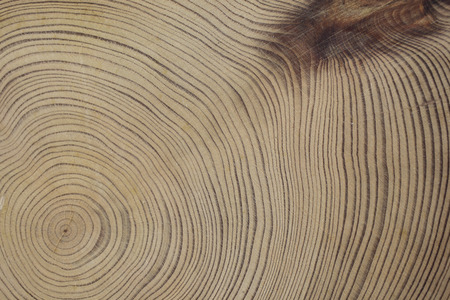官方真题Official48托福听力Lecture3原文+真题解析
- 2017年12月13日19:36 来源:小站整理
- 参与(0) 阅读(217311)
托福听力考试中包含2个Conversation和4个Lecture。对于很多考生来说,托福听力考试可能是整个托福考试当中比较难的一个考试部分。它们可能因为听不懂或者题型不够了解等等原因,使得成绩得不到提升。这里小编为大家整理的官方真题Official托福听力原文以及真题解析,希望可以帮助到大家。
官方真题Official48托福听力Lecture3练习>>>点击进入
官方真题Official48托福全套题目、解析、模板及范文汇总:http://toefl.zhan.com/官方真题Official64813.html
托福官方真题Official48听力lecture3听力原文:
Listen to part of a lecture in a biology class.
Professor: Okay, today I’d like to spend some time going into more detail about symbiosis. Symbiosis, what is it, anyone?
Student: I thought it’s when two organisms are in a relationship that they both benefit from. Well, at least that’s what I thought it was until I did the reading last night. Now I am kind of confused about it because the book used that definition to describe mutualism. Could you explain the difference?
Professor: Good. I was hoping someone would bring that up. Sometimes scientists working in different fields use the term symbiosis to mean slightly different things. And it can get confusing, for example when symbiosis is used as a synonym for mutualism. But they are quite a few of us out there who think there should be a clearer distinction made between the two.
Okay, where to begin? The original definition of symbiosis is pretty simple. It simply means living together. So any close relationships between two different organisms of different species would be considered a symbiotic relationship, including positive and negative relationships. Mutualism, then, is a kind of symbiosis, a specific type of symbiotic relationship where both organisms benefit somehow. So your book is correct. Now, I want to make it clear that the positive result from being in a mutualistic relationship doesn’t have to be equal for both organisms. It’s not a one to one ratio here. Is everyone with me so far? Symbiosis: general term. Mutualism: a narrow or more specific kind of symbiosis.
Now, let’s take a closer look at mutualistic relationships. I’ll start off by describing a case of mutualism that involves a certain butterfly species found in South Africa and Australia. It’s a good example of how dependence on a mutual relationship can vary. Okay, there’s this butterfly family. I will spare you the fancy Latin name because it’s not important for our purposes here. I’ll call them coppers and blues. Well, because most members of this family have blue or copper color wings. I think this is one of the most interesting cases of mutualism. These butterflies require the presence of ants to complete their life cycle. Their interaction with ants is obligatory. So this is what happens. A female butterfly of these coppers and blues will lay eggs only on vegetation where there are ants of a particular species. The butterflies can smell. Well, ants leave behind pheromones, a special chemical signal. The butterfly recognizes the ant’s pheromones on the plant. And then the newly hatched butterflies, the caterpillars, will feed on this plant after they hatch from the eggs. As the caterpillar gets a little older and finds shelter under nearby rocks or stones to protect itself from predators, it’s always attended or escorted by ants. It always makes its way back to the host plant to feed, guided by the ants—the ant escort service, so to speak.
Now, why would ants go through all this trouble? What’s their benefit, Mary?
Mary: It’s probably related to food.
Professor: You’re on to something.
Mary: Okay, ants feed on sweet stuff, right? So the caterpillar must have some kind of special access to honey or sugars or something like that. Maybe caterpillars produce honey somehow. On second thought, I am probably way off.
Professor: You’re pretty close, actually. The caterpillars have a honey gland, an organ that secretes an amino acid and carbohydrate liquid. The caterpillar secretes the liquid from the honey gland, rather large quantities, enough to feed several ants. But what makes this relationship obligatory for the caterpillar? Well, if the ants don’t feed regularly on the liquid from the caterpillar’s honey gland, the gland overloads and gets infected. The infection will kill the caterpillar and it will never reach its final stage of development, becoming a butterfly. John?
John: Okay, I just want to make sure I am following here. The caterpillar needs the ants or it won’t make it to the stage where it can become a butterfly and the ants do this because they get an easy meal out of it, right? But the ants don’t absolutely need the caterpillar for survival because they can get food from other places, right? So it’s still called mutualism even though it seems like the caterpillar is getting way more out of it. Oh, wait. You said they don’t have to equally benefit. Never mind. Sorry.
Professor: Yes, but there is a type of mutualism where the relationship is necessary for both organisms to survive. It’s called obligatory mutualism. And we’ll talk about that in the next class.
官方真题Official48托福听力Lecture 3题目+解析
1.What is the professor mainly discussing?
A.Different ways that scientists use the term “symbiosis”
B.A specific kind of symbiotic relationship between organisms
C.A butterfly species that competes with another insect species
D.Reasons why symbiosis is considered a subtyle of mutualism
Q1
正确答案:B
定位原文:全文
解析:全文的脉络非常清晰,现提出symbiosis的概念,和mutualism的概念区别,然后讲述了a case of mutualism 来证明自己解释过的概念区别,这个case就是a certain butterfly species found in South Africa and Australia 和ants of a particular species之间的mutualism。只能选择选项B。
2.What does the professor imply about the term “symbiosis”?
A.It is often used with too narrow a meaning.
B.It is used incorrectly in the students’ textbook.
C.The original definition is difficult to understand.
D.It is applied only to organisms of the same species.
Q2
正确答案:A
定位原文:
Professor:… But they are quite a few of us out there who think there should be a clearer distinction made between the two. Okay, where to begin? The original definition of symbiosis is pretty simple. It simply means living together… Now, I want to make it clear that …Symbiosis: general term. Mutualism: a narrow or more specific kind of symbiosis.
解析:professor 先说了真的很少有人能分清楚symbiosis和mutualism两者的区别,而且symbiosis的原始概念非常简单,但是实际上最后总结的是mutualism是属于symbiosis的一种,symbiosis实际是一个广义的概念。那也就是说,虽然symbiosis和mutualism就是paraphrase地那样被理解和使用,都被当成近义词了,但是其实symbiosis的概念范畴大一些,也就是之前那样的使用时是把它的概念弄得很狭窄了。对应A选项。
3.How do the butterflies mentioned by the professor facilitate the relationship between caterpillars and ants of a certain species?
A.The butterflies have a sweet smell that attracts the ants.
B.The butterflies lay their eggs under rocks where the ants lay their eggs.
C.The butterflies lay their eggs on plants where the ants are present.
D.The butterflies identify a food source for both ants and caterpillars.
Q3
正确答案:C
定位原文:
Professor:… Their interaction with ants is obligatory. So this is what happens. A female butterfly of these coppers and blues will lay eggs only on vegetation where there are ants of a particular species.
解析:根据原文的lay eggs only on vegetation where there are ants of a particular species 可知C选项为其同义表达。
4.In the example the professor mentions, how do the ants benefit from their interaction with the caterpillars?
A.The caterpillars protect the ants’ eggs from predators.
B.The caterpillars help the ants find a particular plant.
C.The caterpillars produce a liquid to prevent ants from getting infections.
D.The caterpillars produce a liquid from a species gland to feed the ants.
Q4
正确答案:D
定位原文:
Professor: You’re pretty close, actually. The caterpillars have a honey gland, an organ that secretes an amino acid and carbohydrate liquid. The caterpillar secretes the liquid from the honey gland, rather large quantities, enough to feed several ants.
解析:蝴蝶的幼虫从蜜槽里分泌很多的液体供蚂蚁食用。对应选项D。
5.What aspect of mutualism does the professor illustrate with the example of the caterpillars and the ants?
A.Both organisms need the relationship for survival.
B.It is not necessary for both organisms to benefit equally from the relationship.
C.There is more benefit for the organism that is less dependent on the relationship.
D.The relationship does not need to be beneficial to both organisms.
Q5
正确答案:B
定位原文:
But the ants don’t absolutely need the caterpillar for survival because they can get food from other places, right? So it’s still called mutualism even though it seems like the caterpillar is getting way more out of it. Oh, wait. You said they don’t have to equally benefit. Never mind. Sorry.
解析:这段信息是从最后一个学生的自问自答中体现的,存在互利关系的两个物种从互利的地位上而言不一定要对等,这个信息在最开始老师区分symbiosis和mutualism的概念中老师已经提到过了。
6.What can be inferred about the student when she says this:
A.She needs more time to think about the answer.
B.She is almost certain that caterpillars produce honey.
C.She thinks her statement may be misunderstood.
D.She doubts that her statement is correct.
Q6
正确答案:D
定位原文:
Mary: Okay, ants feed on sweet stuff, right? So the caterpillar must have some kind of special access to honey or sugars or something like that. Maybe caterpillars produce honey somehow. On second thought, I am probably way off.
解析:professor问蚂蚁可以从这种互利关系中获得什么呢?学生说蚂蚁不是吃甜的么,那没准儿是这种蝴蝶幼虫可以有办法提供给蚂蚁这类物质呢,要么就是这类蝴蝶产生什么蜂蜜之类。但是经过仔细考虑之后,我又觉得我是不是错的很远。On second thought:进一步考虑后,仔细考虑后; way off:有很大距离,错得厉害,离得很远。她不需要更多的时间考虑,她的回答也没有被误解,她只是怀疑她的想法是不是正确而已,只能选择D选项。
以上就是小编为大家整理的官方真题Official48托福听力真题解析及听力原文,大家在托福听力备考时可以拿来进行参考,希望可以帮助到大家。最后,小编预祝大家托福考试能取得理想的成绩。
本文部分内容来源于互联网,如有疑问请联系小站管理员进行删除。






























